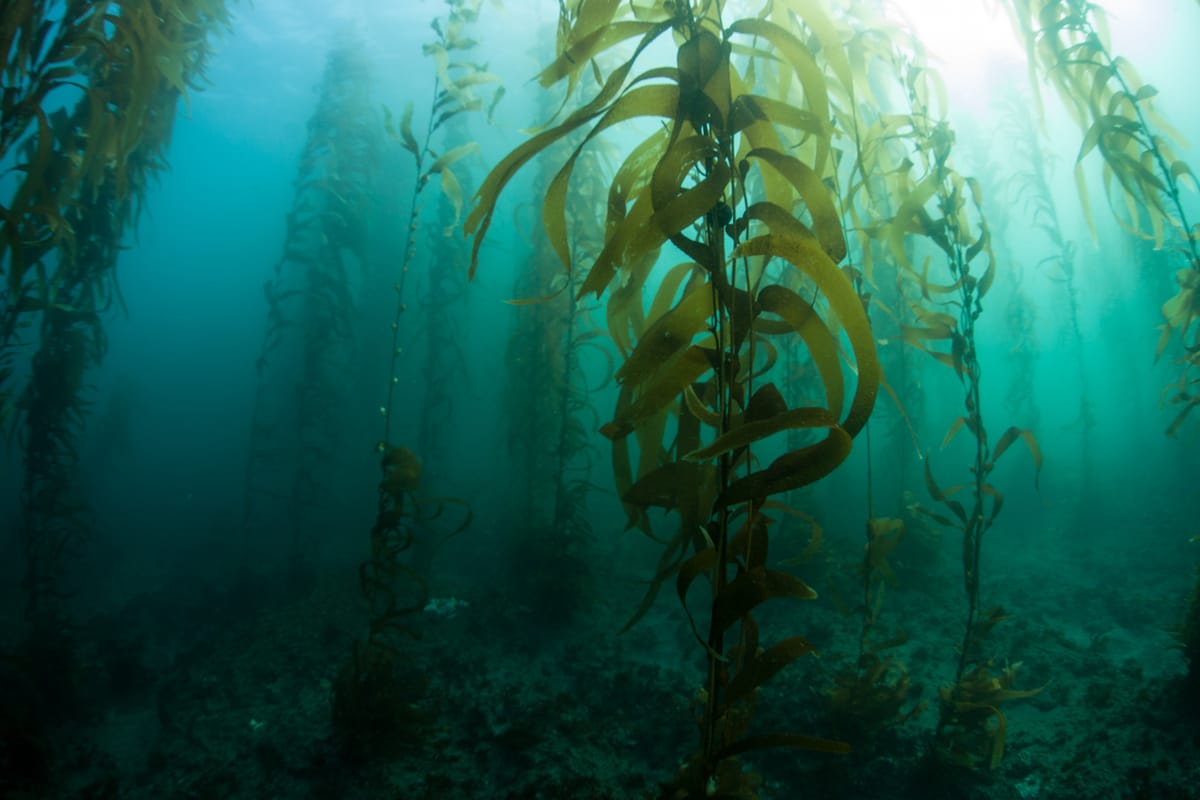As carbon dioxide emissions continue to rise, the ocean’s capacity to absorb carbon is weakening. Historically, the ocean has acted as a vital buffer, absorbing nearly 30% of all anthropogenic CO2 emissions. However, the sea becomes more acidic as more CO2 dissolves into seawater, lowering the pH and reducing its ability to capture additional carbon. Warmer ocean temperatures also decrease CO2 solubility, further diminishing the ocean's role as a carbon sink and accelerating climate change.
In response to these challenges, marine carbon dioxide removal (mCDR) is gaining attention as a potential tool to enhance the ocean’s natural ability to capture and store carbon. While the area still requires additional research and investment, potential mCDR approaches include iron fertilization to boost phytoplankton growth and carbon capture, and biomass sinking, where organic materials like seaweed are submerged in the deep ocean to sequester carbon for long periods of time.
Another effort focuses on ocean alkalinity enhancement (OAE), where alkaline substances are added to neutralize acidity and capture CO2. Blue Climate Collective member Vesta Earth utilizes this approach by adding carbon-removing sand made of the natural mineral olivine to restore coastal systems that have been eroded. As it dissolves over time, it captures CO2. This innovative approach, known as Coastal Carbon Capture (CCC), helps combat climate change by permanently removing CO2 from the atmosphere and storing it as alkalinity in the ocean.
Collective member Sinkco Labs is also embracing an innovative approach to mCDR. Sinkco Labs "fossilizes" plant biomass such as seaweed by submerging it in deep ocean sediment, where cold temperatures, high pressure, and low oxygen conditions allow the carbon to remain sequestered for millions of years. Prior to storage, the company also extracts valuable compounds from the biomass to create sustainable, carbon-negative products, offering a dual solution for carbon storage and sustainable food production.
Sinkco Labs recently became the first mCDR company selected for the Breakthrough Energy Fellows Program. This program supports world-class innovators working on clean technologies essential to achieving a net-zero emissions future. Co-founders Viji Thomas, Victor Choquet, and Brenna Boehman will receive non-dilutive funding and technical support to launch a pilot project for their carbon removal solution in the Gulf of Mexico, marking a significant milestone for the company and the mCDR field.
In addition, mCDR was a featured topic during Climate Week NYC. The event, hosted by Ocean Visions and featuring leaders from the White House, the Office of the Singapore Prime Minister, and Builders Vision, shed light on the latest advancements and challenges of these ocean-based carbon capture solutions. From deep-sea kelp farming to fossilizing plant biomass, these technologies are shaping the future of climate mitigation by amplifying and accelerating the ocean’s role in the fight against climate change.
What we’re reading:
- The Earthshot Prize and Bloomberg Philanthropies co-hosted the third Earthshot Prize Innovation Summit on September 24th in New York City, where 15 finalists of the 2024 Earthshot Prize were announced. Winner will be announced in November in Cape Town, South Africa during the Earthshot Prize’s fourth annual awards ceremony, where five of the 15 finalists will be awarded £1 million to scale their innovative solutions. Past winners include Blue Climate Collective members Notpla (2022 Winner under “Build a Waste-free World” category) and CoralVita (2021 Winner under “Revive Our Oceans” category).
- The House Science Committee is developing legislation to guide federal research on marine carbon removal technologies, which aim to filter carbon dioxide from oceans. While Republicans view these technologies as a way to maintain energy independence and continue using fossil fuels, Democrats support the research but caution against relying on it to delay current climate action. However, passing the bill this year seems unlikely due to other legislative priorities.
- Eelgrass—a seagrass found along coastlines from Chesapeake Bay to Maine— plays a crucial role in carbon sequestration, sequestering four to ten times more carbon as the same area of forest. But eelgrass is rapidly declining due to environmental stressors such as warming waters, pollution, and invasive species, highlighting the need for innovations that can aid in the sequestration of carbon in parallel to conservation efforts.
- The global shipping industry, responsible for over 80% of world trade and 3% of human-made carbon emissions, is under pressure to reach net zero emissions by mid-century. While companies are exploring alternative fuels like methanol and ammonia and technologies such as wind power and carbon capture, over 90% of the world fleet still runs on oil. Regulatory efforts, including the International Maritime Organization's targets and the EU’s emissions trading system, aim to drive decarbonization, but the industry faces significant challenges in transitioning from fossil fuels.
- A new study warns that industrial fishing is driving the world's oceans toward collapse, urging 11 key actions to preserve marine health, such as reducing harmful fishing methods and keeping fish populations at 60% of natural levels. The report emphasizes restricting bottom trawling, which causes significant bycatch and ecosystem damage. While some experts call for stronger protections, others argue that current measures may harm food security. The study stresses the need for sustainable fishing practices to ensure the ocean's ability to provide essential ecosystem services and support long-term fisheries survival.
- Scientists have finally traced the mysterious "biotwang" sound, first recorded in 2014, to the Bryde's whale in the western Pacific. Using AI to analyze decades of ocean sound data, researchers identified the sound as specific to a population of Bryde's whales, providing new insights into their migration patterns and helping to track their movements. This breakthrough offers a valuable tool for studying whale populations and could aid in marine mammal conservation efforts.


